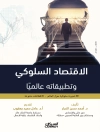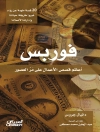Economic application of nonlinear dynamics, microscopic agent-based modelling, and the use of artificial intelligence techniques as learning devices of boundedly rational actors are among the most exciting interdisciplinary ventures of economic theory over the past decade. This volume provides us with a most fascinating series of examples on ‘complexity in action’ exemplifying the scope and explanatory power of these innovative approaches.
Cuprins
Learning in Computational and Laboratory Experiments.- The Implementation of the Turing Tournament: A Report.- Expectations Structure in Asset Pricing Experiments.- Learning in a “Basket of Crabs”: An Agent-Based Computational Model of Repeated Conservation Auctions.- On the Benefit of Additional Information in Markets with Heterogeneously Informed Agents — an Experimental Study.- Games and Strategic Interactions.- Crowd Effects in Competitive, Multi-Agent Populations and Networks.- Local Minority Game and Emergence of Efficient Dynamic Order.- Agents with Heterogeneous Strategies Interacting in a Spatial IPD.- Complexity Leads to Benefits: Pareto-Improving Chaos in a Heterogeneous Duopoly Market.- Innovation, Networks and Learning Dynamics.- On Novelty and Heterogeneity.- ‘Collective Innovation’ in a Model of Network Formation with Preferential Meeting.- Population Learning in Random Games with Endogenous Network Formation.- Growth and Coalition Formation.- The Topology of Shareholding Networks.- Statistical Physics Approaches.- A New Model of Labor Dynamics: Ultrametrics, Okun’s Law, and Transient Dynamics.- A Finitary Characterization of the Ewens Sampling Formula.- Statistical Properties of Absolute Log-Returns and a Stochastic Model of Stock Markets with Heterogeneous Agents.- Asset Price Dynamics.- Asset Price Dynamics and Diversification with Heterogeneous Agents.- An Asset Pricing Model with Adaptive Heterogeneous Agents and Wealth Effects.- The Red Queen Principle and the Emergence of Efficient Financial Markets: An Agent Based Approach.- Price Formation in an Artificial Market: Limit Order Book Versus Matching of Supply and Demand.- Fraudulent Agents in an Artificial Financial Market.












